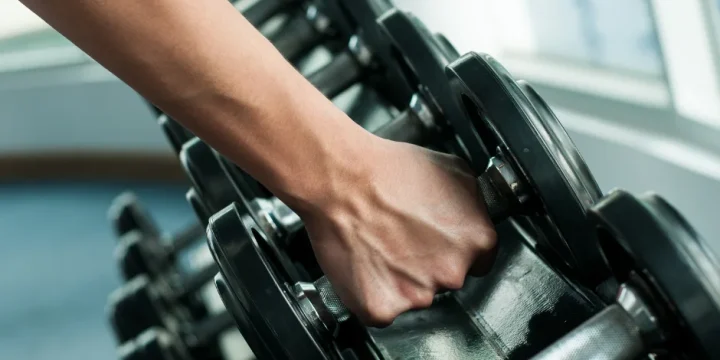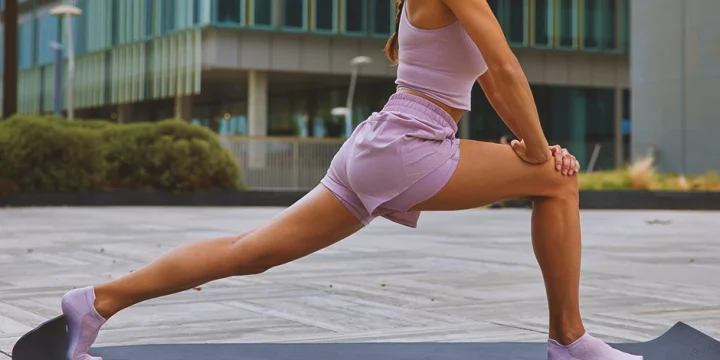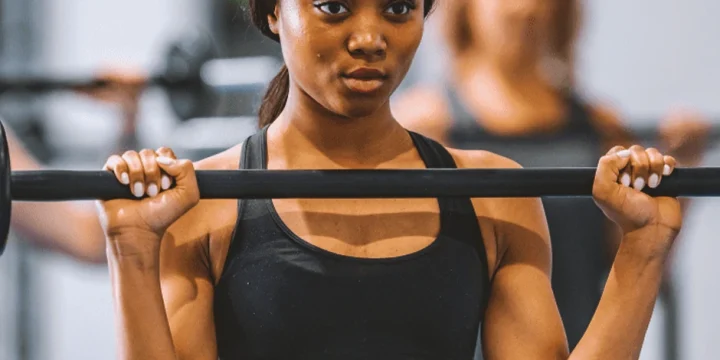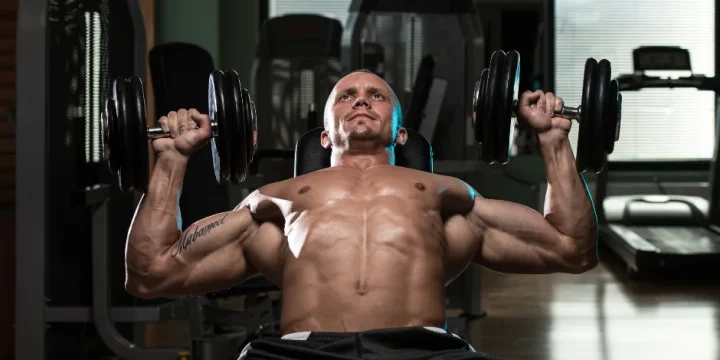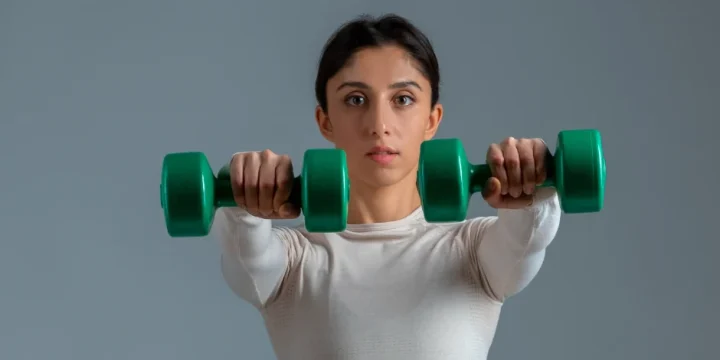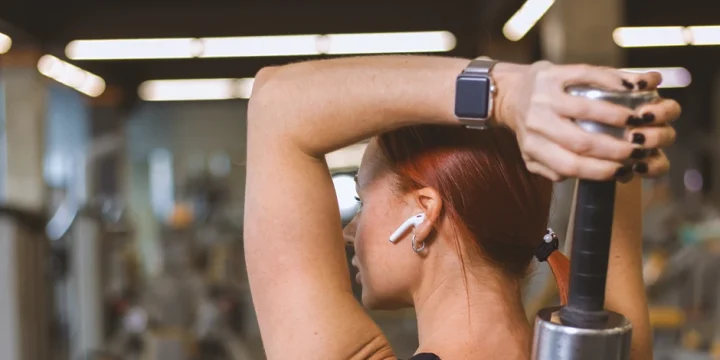From my experience as a senior coach, I've seen the dumbbell reverse fly powerfully strengthen the upper back muscles, making it a staple in my training programs.
With its wide range of motion and activation of stabilizer muscles, this exercise is highly effective in building upper-body strength and promoting better posture.
Drawing on my expertise as a fitness professional, I have witnessed firsthand the benefits of incorporating dumbbell reverse fly exercises into fitness routines.
In this article, I will share my experience with this exercise and guide you through the proper technique to maximize its effectiveness.
Quick Summary
- The dumbbell reverse fly effectively strengthens upper back muscles, enhancing posture and improving shoulder stability.
- Performing the dumbbell reverse fly with a wide-arc arm motion targets the rear deltoids, rhomboids, and trapezius, offering versatility with both standing and seated variations.
- For strengthening back and shoulder muscles, the dumbbell reverse fly is especially effective in sports like swimming and archery, according to research published in the Clinics in Shoulder and Elbow journal.
- I find the dumbbell reverse fly to be an invaluable addition to training routines, especially for its targeted muscle development and contribution to athletic performance in sports that demand strong back and shoulder muscles.
How to Perform Dumbbell Reverse Fly

The dumbbell reverse fly is a highly effective exercise that primarily targets the muscles of the upper back, specifically the rear deltoids (posterior deltoids), rhomboids, and trapezius.
It is performed using dumbbells and involves a motion where you raise your arms out to the sides in a wide arc.
In my practice, I teach clients to perform the dumbbell reverse fly both standing and seated, each offering unique benefits.
To correctly perform the standing dumbbell reverse fly, follow these step-by-step instructions:
- Stand with your feet shoulder-width apart, knees slightly bent, and hold a dumbbell in each hand with palms facing your body.
- Bend forward at the hips, keeping your back straight and your core engaged. With a hinged forward hip position and a neutral spine, let your arms hang in front of you, slightly flexing your elbows.
- Squeeze your shoulder blades together and lift your arms out to the sides in a wide arc. Maintain a slight bend in your arms and focus on using the muscles of your upper back region to lift the dumbbells.
- Continue raising your arms until they are parallel to the ground or slightly higher, feeling a contraction in your upper posterior muscles. Pause briefly at the top of the movement.
- Slowly lower the dumbbells back to the starting position in a controlled manner, feeling a stretch in your upper back muscles. Repeat the exercise for your desired number of repetitions, focusing on maintaining control and proper form throughout the movement.
Muscles Trained With Reverse Fly Exercise

The dumbbell reverse fly primarily strengthens the upper back, posterior deltoids, and shoulder muscles.
From my work with clients, I saw how adjusting the arm angle or body position can also engage secondary muscles for more comprehensive support and movement.
Posterior Deltoids
Located at the back of the shoulder, these muscles are crucial for shoulder extension and horizontal abduction [1].
The reverse fly exercise specifically targets and strengthens them, enhancing both the appearance and functionality of your shoulders.
Learn More: Best Rear Delt Exercises: Grow Posterior Deltoids Fast
Rhomboids
These upper back muscles between the shoulder blades are key in retracting and stabilizing the shoulder blades [2].
The reverse fly actively engages the rhomboids, promoting proper shoulder alignment and scapular stability, and thus improving posture and upper back strength.
Trapezius
This large muscle, covering the upper back and neck, has three sections: upper, middle, and lower.
The reverse fly mainly targets the middle and lower trapezius, aiding in shoulder retraction and scapular stabilization, which are essential for the exercise's execution [3].
Rotator Cuff Muscles
Comprising muscles and tendons around the shoulder joint, the rotator cuff ensures stability and smooth movement.
In the reverse fly, these muscles collaborate with the posterior deltoids to maintain shoulder mechanics and prevent injury, thereby strengthening the rotator cuff and enhancing overall shoulder stability [4].
The Benefits

Comprehensive Upper-Body Workout
The dumbbell reverse fly effectively targets and develops key upper back muscles, including the rhomboids and trapezius, while also engaging the posterior deltoids and shoulder muscles.
Improved Posture
Ideal for counteracting the effects of prolonged sitting and hunching, this exercise strengthens muscles that retract and stabilize the shoulder blades, leading to better posture and a more upright stance.
Increased Range of Motion
Its wide-arc motion enhances shoulder and upper back flexibility and mobility, surpassing other back exercises.
Stabilizer Muscle Activation
By engaging stabilizer muscles, the dumbbell reverse fly ensures proper joint alignment and stability, boosting overall strength and reducing injury risks in daily activities and other exercises.
"The dumbbell reverse fly not only strengthens the posterior deltoids but also engages the muscles of the rotator cuff, which can contribute to improved shoulder joint stability and reduced risk of impingement."
- Dr. Andrew Thompson, Orthopedic Surgeon
Targeted Muscle Development
In my training programs, I focus on the dumbbell reverse fly for its ability to specifically target and strengthen crucial upper back muscles like the posterior deltoids, rhomboids, and trapezius.
Sports Performance Enhancement
For strengthening the back and shoulder muscles, the dumbbell reverse fly can be particularly beneficial in sports like swimming and archery, as per Clinics in Shoulder and Elbow journal research [5].
FAQs
Is the Dumbbell Reverse Fly an Effective Exercise?
Yes, the dumbbell reverse fly is considered an effective exercise for targeting and strengthening the muscles of the upper back. It engages multiple muscle groups and can lead to improved posture and upper-body stability.
Are Reverse Flys Bad?
Reverse flys are not considered bad exercises when performed correctly and with appropriate technique. However, as with any exercise, it's important to use proper form, start with manageable weights, and listen to your body to avoid injury.
Supplement Your Dumbbell Reverse Fly for Better Results
Dumbbell reverse flys are a highly effective exercise that offers a range of benefits, including improved range of motion, enhanced muscle balance, and increased engagement of the stabilizer muscles.
From my personal experience as a fitness expert, incorporating dumbbell reverse flys into your workout routine can yield remarkable results.
It can significantly enhance the development of your upper back muscles, improve overall upper body strength, and contribute to a more balanced and visually appealing physique.
In addition, combining the exercise with a great protein powder supplement for building muscle can further promote post-workout recovery.
References:
- https://www.kenhub.com/en/library/anatomy/the-deltoid-muscle
- https://www.kenhub.com/en/library/anatomy/rhomboid-muscles
- https://www.ncbi.nlm.nih.gov/books/NBK518994/
- https://www.kenhub.com/en/library/anatomy/the-rotator-cuff
- https://www.ncbi.nlm.nih.gov/pmc/articles/PMC7726387/
About The Author
You May Also Like
